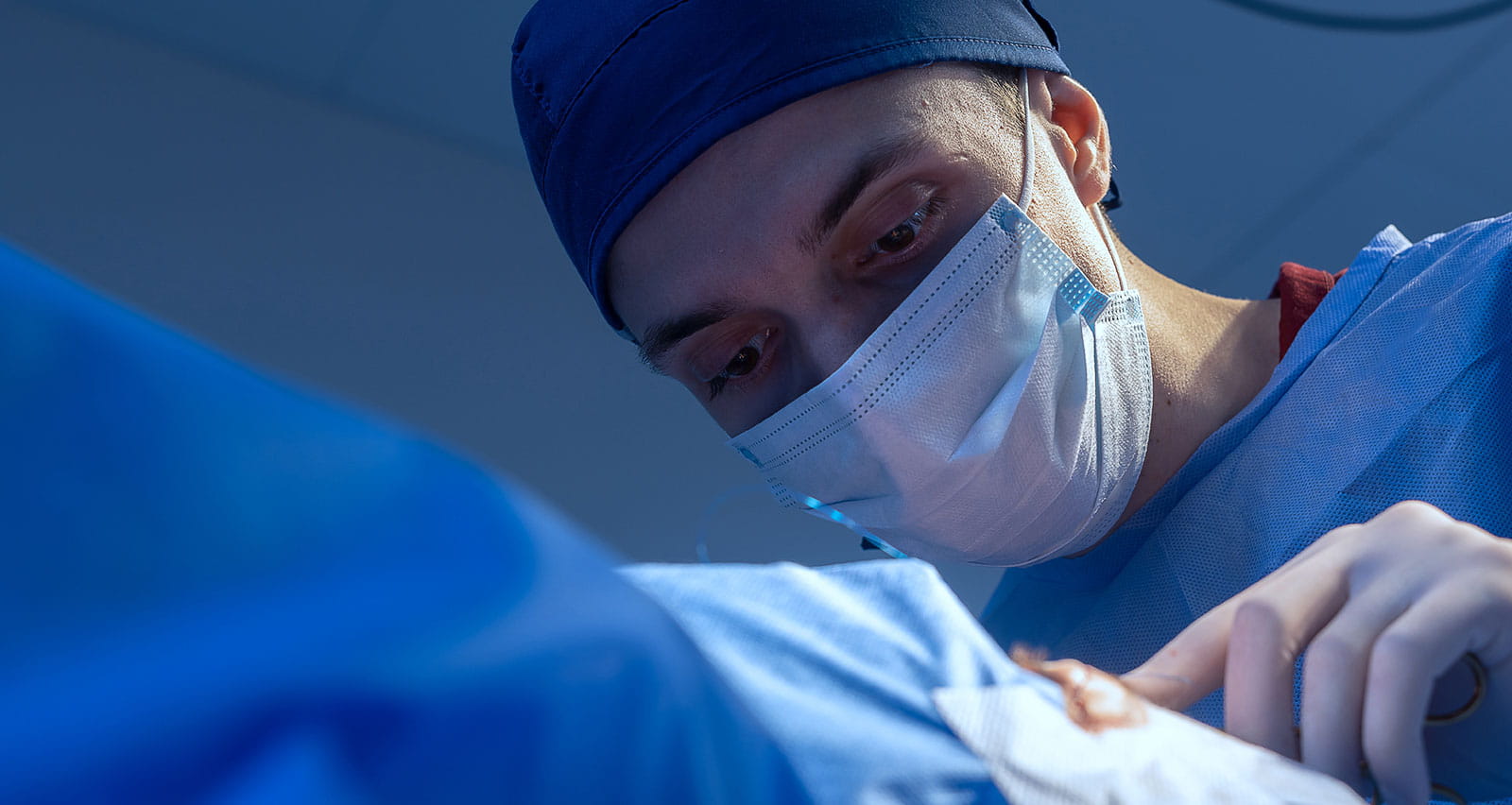
Scar Revision and Keloid Removal
Scars and keloids form as part of the body’s natural healing process after injury, surgery or trauma. While most scars fade over time, some remain prominent due to factors like wound depth, location or skin type. In addition to affecting appearance, scars and keloids can cause itching, reduced skin sensations and tightness that can restrict facial movement.
The facial plastic surgeons at University Hospitals offer effective solutions to minimize the appearance of scars and keloids and help individuals achieve smoother skin and improved facial mobility.
Make an Appointment
To schedule a consultation with a UH facial plastic surgeon, call 216-844-3223.
Find a UH Facial Plastic SurgeonCommon Types of Scars
- Hypertrophic. Red, raised scars that stay within the edges of the original wound.
- Atrophic. Sunken or pitted scars, often from acne or injury.
- Contracture. Tight, restrictive scars that can limit movement, often resulting from burns.
- Keloids. A specific type of scar that grows beyond the original wound’s edges. They’re often raised, thick and can be itchy or painful. More common in individuals with darker skin tones, keloids tend to form in areas like the chest, shoulders or earlobes and can grow over time, becoming more noticeable.
Procedures to Revise Scars and Remove Keloids
Your surgeon will assess your scar or keloid, discuss your medical history and recommend a personalized plan. Potential risks such as recurrence or changes in skin sensation will be discussed.
Depending on the technique being used, treatment may be performed under local or general anesthesia. Procedures can take from 30 minutes to a few hours depending on complexity while nonsurgical options like laser therapy or injections are faster. Techniques may include:
- Surgical excision. The surgeon removes the scar tissue and carefully closes the wound with precise stitches to create a finer, less noticeable scar and less skin tension which can trigger regrowth of keloids.
- Z-Plasty or W-Plasty. These surgical methods reposition the scar to align with natural skin folds, making it less visible. They’re especially effective for contracture scars.
- Laser resurfacing. Lasers smooth out scar texture and reduce redness by stimulating collagen production. Laser therapy is an effective treatment option for atrophic scars, like those from acne.
- Dermabrasion. This technique “sands” down the scar’s surface to blend it with surrounding skin, making it ideal for raised or uneven scars.
- Injectables. Steroid injections can flatten hypertrophic scars or keloids while injectable fillers may lift atrophic scars for a smoother appearance. These may be administered over several sessions.
- Topical treatments. Silicone gels or sheets, often recommended after surgery, can help to hydrate and flatten scars over time.
Additional Treatments for Keloid Removal
Because keloids tend to recur after removal, plastic surgeons will sometimes use one or more additional techniques to minimize this risk. The following procedures may be recommended:
- Radiation therapy. In severe cases, low-dose radiation at the removal site can lower the risk of keloid recurrence by targeting scar-forming cells.
- Cryotherapy. Freezing the keloid with liquid nitrogen can shrink smaller keloids before or instead of surgery.
- Pressure therapy. Compression garments or earrings (for earlobe keloids) can reduce blood flow to the keloid, potentially preventing or slowing regrowth.
Recovery After Scar Revision or Keloid Removal
Recovery times will vary based on the type and location of the procedure(s). Surgical removal may require a week or two for stitches to heal, while laser treatments require minimal recovery time.
Improvement is gradual. Scars may take months to mature into their final, less noticeable form while keloids require vigilant follow-up to ensure they don’t return.
Make an Appointment
Schedule a consultation with a UH facial plastic surgeon.


